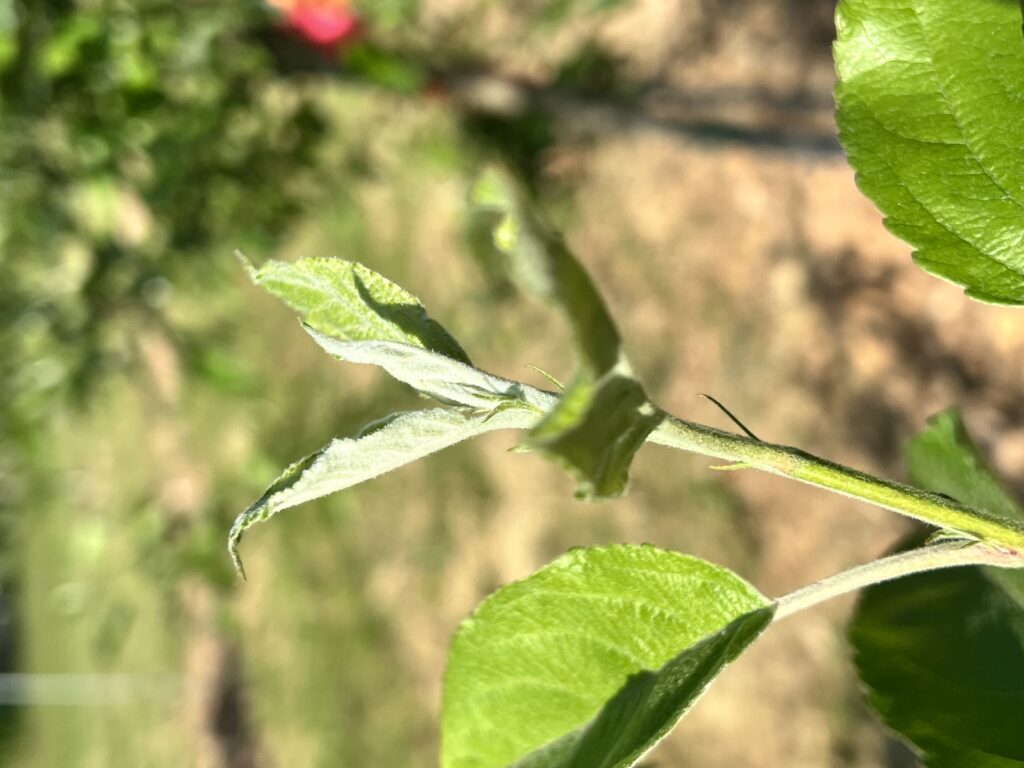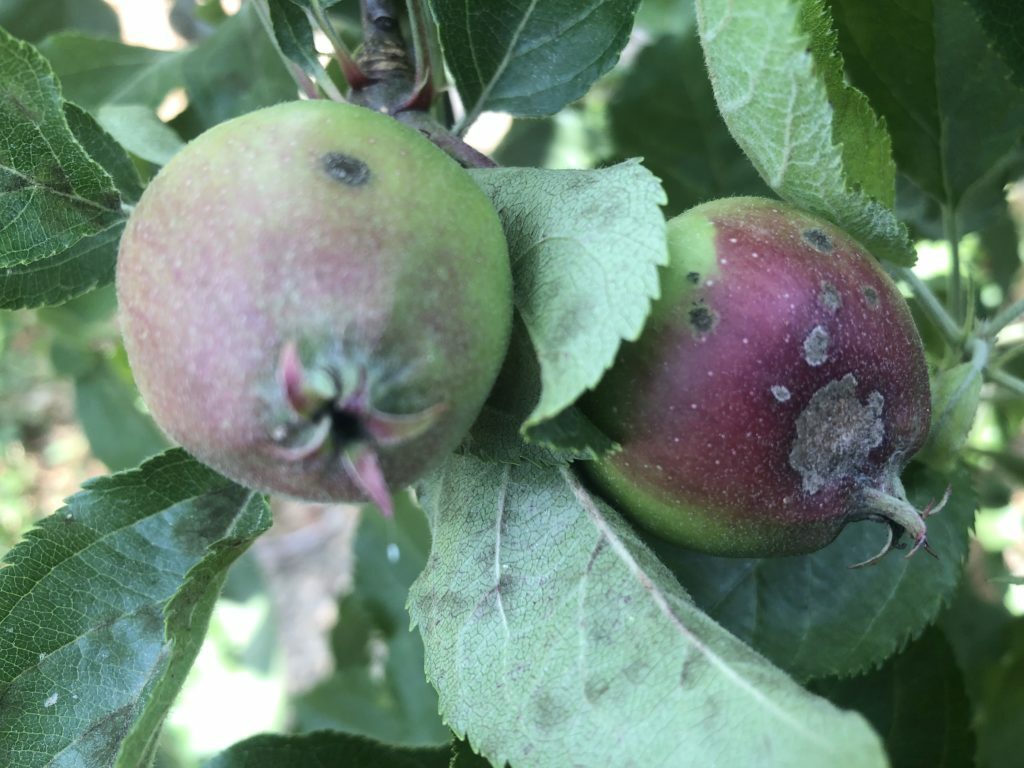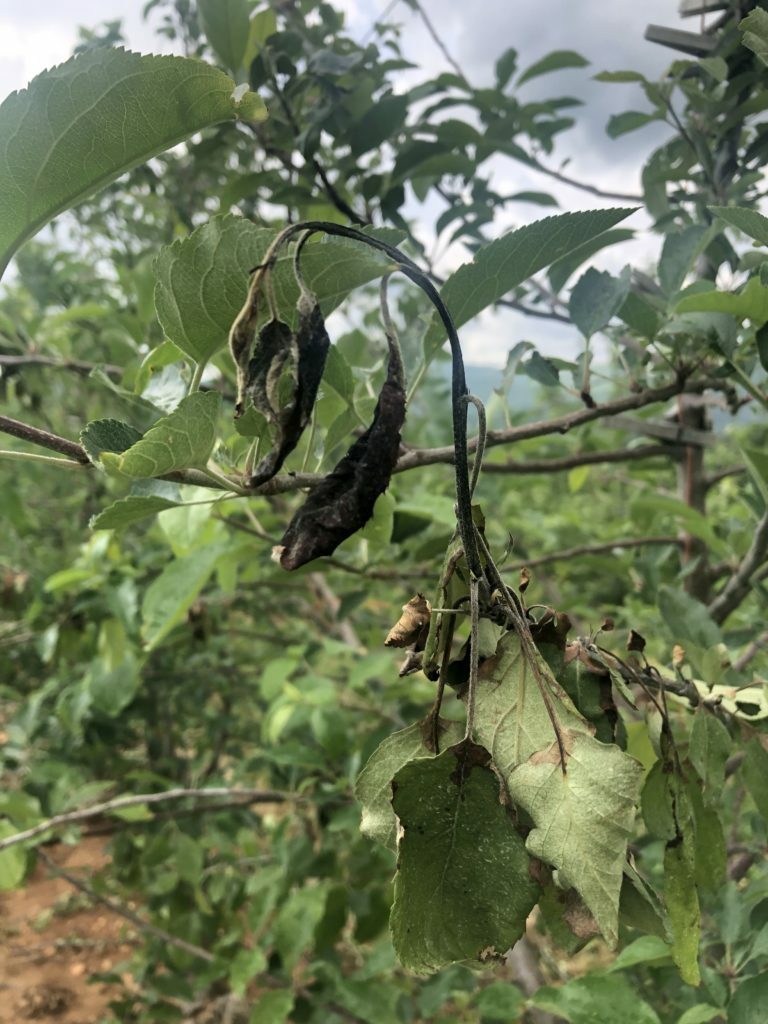2022 Apple Disease Update: Petal Fall/1st Cover
go.ncsu.edu/readext?862935
en Español / em Português
El inglés es el idioma de control de esta página. En la medida en que haya algún conflicto entre la traducción al inglés y la traducción, el inglés prevalece.
Al hacer clic en el enlace de traducción se activa un servicio de traducción gratuito para convertir la página al español. Al igual que con cualquier traducción por Internet, la conversión no es sensible al contexto y puede que no traduzca el texto en su significado original. NC State Extension no garantiza la exactitud del texto traducido. Por favor, tenga en cuenta que algunas aplicaciones y/o servicios pueden no funcionar como se espera cuando se traducen.
Português
Inglês é o idioma de controle desta página. Na medida que haja algum conflito entre o texto original em Inglês e a tradução, o Inglês prevalece.
Ao clicar no link de tradução, um serviço gratuito de tradução será ativado para converter a página para o Português. Como em qualquer tradução pela internet, a conversão não é sensivel ao contexto e pode não ocorrer a tradução para o significado orginal. O serviço de Extensão da Carolina do Norte (NC State Extension) não garante a exatidão do texto traduzido. Por favor, observe que algumas funções ou serviços podem não funcionar como esperado após a tradução.
English
English is the controlling language of this page. To the extent there is any conflict between the English text and the translation, English controls.
Clicking on the translation link activates a free translation service to convert the page to Spanish. As with any Internet translation, the conversion is not context-sensitive and may not translate the text to its original meaning. NC State Extension does not guarantee the accuracy of the translated text. Please note that some applications and/or services may not function as expected when translated.
Collapse ▲As for apple scab, if your trees were in green tip on March 9, there have only been 7 infection events for the 2022 season. Ascospores, which cause the initial, or primary infections of apple scab had all been released by April 26th. This does not mean think you’re out of the clear. If any of the prediction infection events went unprotected, secondary infection is still possible. If you are spraying on a 7-10 day interval for Glomerella Leaf Spot/Bitter Rot, those fungicides and spray interval should have you pretty well covered.
- Always tank mix a single site fungicide with a half rate of captan or mancozeb. In North Carolina, I’d advise using mancozeb at the 3 lb/A rate until the 77 day PHI or until you’ve applied the seasonal application limit of 21 lbs at this rate (whichever comes first) Inspire Super and Cevya have higher intrinsic activity against apple scab compared to other FRAC 3 fungicides with the same mode of action such as Rally 40WSP, Procure, Topguard, and Indar 2F.
- In orchards with resistance to the latter fungicides, Cevya and Inspire Super can still provide a high level of control, particularly when tank mixed with a half rate of mancozeb or captan.
- Although the strobilurins (FRAC 11) and premixed products containing a strobilurin (e.g. Merivon; Luna Sensation) also have high efficacy against scab, I’d save them for Glomerella leaf spot and bitter rot control.
- In general, SDHI fungicides are highly efficacious against apple scab. In our field trials, Aprovia and Miravis have provided the greatest reduction of leaf and fruit scab.
- Powdery mildew has become an increasing issue throughout the region. Particularly when we have hot, precipitation-free weather with young shoot growth. Captan + Mancozeb alone is not sufficient for powdery mildew control.
- If rusts are a concern, be sure to include a DMI (FRAC 3) fungicide in the tank mix.
Next issue on the list in Glomerella leaf spot/bitter rot. This warm weather combined with upcoming predicted rain events and high inoculum carry-over from last season could bring on an early and vicious beginning to the disease. For this week’s fungicide application I would suggest the following to combat both GLS and Bitter Rot:
- Merivon OR Flint Extra OR Luna Sensation (highest rate on label) + mancozeb (half rate)
- If you have QoI/FRAC 11/Strobilurin resistance lay off the that chemistry class and consider an application of Aprovia (full rate) + mancozeb. The Aprovia does have moderate activity against GLS/bitter rot and is an excellent scab/decent powdery mildew fungicide.
Lastly, don’t forget to continue to keep up fire blight management programs. For most cultivars throughout the region, with the exception of maybe Rome Beauty, blossom blight is no longer a concern. At this point your focus should switch to shoot blight management.
Management for the shoot blight stage of fire blight should also begin around petal fall. In order for shoot blight to occur, their must be inoculum present within or near an orchard (i.e. there must be a local inoculum source). Thus, even just a few blossom blight infections or an infected Bradford pear in front of your neighbor’s house can serve as a strong catalyst for shoot blight infection. Shoot blight is the result of infection to young, emerging leaf tissue. Injury to this susceptible leaf tissue provides the means for bacteria to invade and progress down young shoots. Insects with sucking or piercing mouth parts, or other types of wounds created from environmental conditions (e.g. hail, wind, soil abrasion, etc). Application of a plant growth regulator, prohexadione calcium (marketed as Apogee or Kudos) has demonstrated the greatest efficacy against shoot blight in commercial plantings and in research trials. The chemical retards shoot growth, thereby reducing the amount of susceptible tissue available. Prohexadione calcium also thickens xylem cell walls acting as a barrier to the bacterium. At least two applications of prohexadione calcium should be applied during the season for shoot blight management. For mature trees a 12 oz/100 gal rate is recommended at 1-3″ of shoot growth and then 14-21 days later. For trees less than 5 years old in which you are trying to fill the canopy, make applications at the same timings but at a reduced rate of 3-6 oz/100 gallons (again, I’d lean towards the higher rate, especially in trees 3rd leaf or older). Make sure to follow label guidelines on the addition of water softeners and penetrating adjuvant when making an application. Also, do not apply calcium in tank mixture with ProCa.





